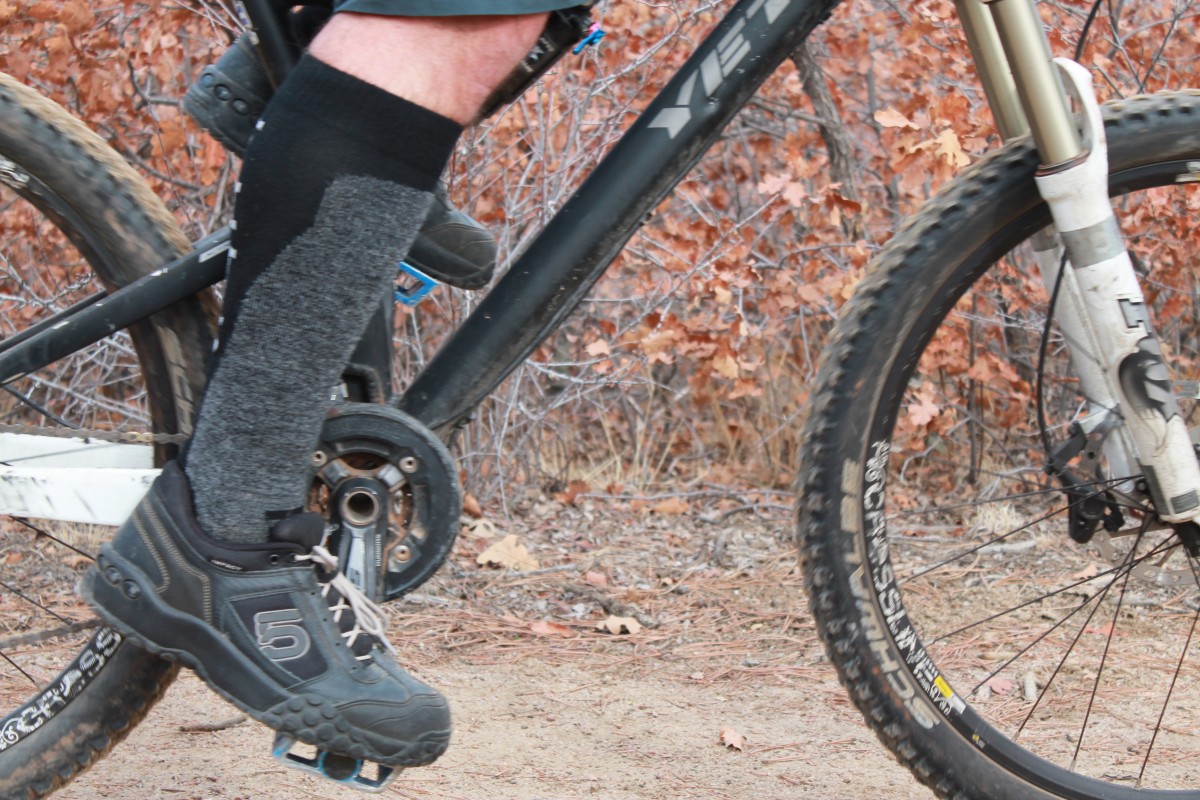
One of the biggest things that can kill the buzz on a winter ride is cold feet. And once our feet get cold on a ride, it seems like it’s nearly impossible to get them warmed up again. With that in mind, here are eight tips for keeping your feet warm this winter so you can pedal all day long.
1. Throw on an extra pair of socks.
If your ride looks like it’ll be dry, throwing on an extra pair of socks is an easy solution, assuming you have room in your cycling shoes. I recommend wearing a thin, synthetic, or silk sock on your foot and a thicker, warmer sock on top of that. Wool works great for an outer sock, as does Possum fur.
2. Wear the right socks.

Cotton socks are a bad choice for winter riding because they lose much of their insulating value as soon as they become damp from sweat or wet from conditions. Stick with synthetic or wool materials to keep feet warm on all your winter rides.
3. Try toe or shoe covers.
Road bikers swear by toe covers on cold days because they do a great job at cutting down on the wind blowing into vented shoes. I personally haven’t had much luck with shoe covers and I suspect it’s because, as a mountain biker, wind isn’t usually the thing that’s making my feet cold. Still, if you do a lot of your mountain biking in exposed areas or in windy conditions, throw on a pair of shoe covers to keep feet toasty.
A less expensive option is to simply duct tape any vents or holes in your shoes before a winter ride. Many cycling shoes are designed with mesh vents to keep feet cool in summer, so plugging the holes can make a big difference.
4. Buy winter-specific cycling shoes.

These days there are many choices for winter-specific cycling shoes, and some designed to keep feet warm in temperatures well below freezing. Winter-specific shoes are probably the most effective solution for keeping feet warm, but they’re pricey and mainly useful in only the coldest months of the year.
5. Pay attention to your core.
Oftentimes, cold feet are merely a sign that our core body temperature is too low. In some cases, simply adding a vest or an insulated cap can send warmer blood to extremities like fingers and toes.
6. Keep your feet dry.

We may not realize it, but as mountain bikers we’re often exposed to wet conditions, especially around our feet. Creek crossings, dew-saturated leaves and grasses, and mud add up over the course of a ride to leave feet damp, if not completely wet. Consider avoiding wet areas if you can or adding waterproof socks to your kit. You can even get creative and wrap feet in plastic grocery bags for particularly wet areas.
For more tips on keeping your feet dry in creek crossings (and more great drawings too), be sure to read this.
7. Crack open a chemical warmer.
Skiers often use chemical warmers and mountain bikers should consider doing the same for particularly stubborn cases of cold feet. Finding a comfortable spot in your cycling shoe can be tricky but in general, it’s best to slip the warmer over the top of your toes.
8. Swap out your insole.

Some shoes, like the Louis Garneau T-Flex 300 shoes I tested a few years ago, include a thicker “winter” insole that’s designed to be warmer than the perforated, thinner summer insole. Even if your shoes don’t include a winter insole, you can probably find an insole at the drug store that offers a bit more insulation than your shoe’s stock insole.
Everyone has different levels of tolerance when it comes to cold feet, so be sure to try any (or all!) of these methods until you find what works for you. Hopefully this winter cold feet won’t be the thing that keeps you off the bike!



















